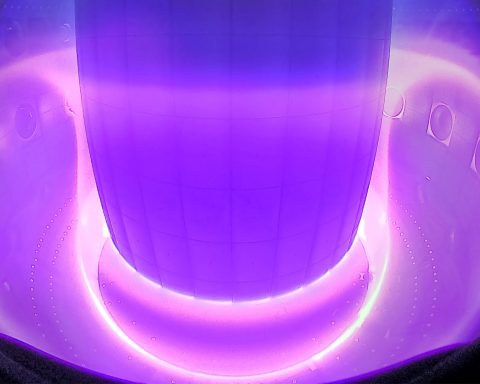- Publishers are prototyping “thinking” NPCs. Ubisoft’s NEO NPCs (with Inworld + NVIDIA) debuted at GDC 2024 as a player‑facing generative AI prototype for live, unscripted conversations and planning. Ubisoft News
- NVIDIA is pushing beyond chat. In 2025, NVIDIA said ACE characters will “perceive, plan, and act like human players,” debuting co‑playable companions in PUBG‑style demos. NVIDIA
- Academic research shows believable “generative agents.” Stanford/Google’s “Smallville” project demonstrated agents that remember, reflect, and coordinate (e.g., planning a Valentine’s party). arXiv
- Writers aren’t being replaced—yet. Ubisoft’s Ghostwriter generates first‑draft “barks,” explicitly framed as a tool to free writers for higher‑level narrative work. Ubisoft News
- Skepticism remains. Hands‑on reports found early AI NPCs can still feel like chatbots, with latency and generic replies. The Verge
- Small language models (SLMs) are key. NVIDIA highlights on‑device SLMs and in‑game inference to cut costs and latency for agentic NPCs. NVIDIA Developer
- Platform rules are evolving. Steam now requires developers to disclose AI use and detail safeguards for live‑generated content. Steam Community
- Adoption is growing fast. One analysis found 1 in 5 Steam releases in 2025 disclosed generative AI use—up ~681% year over year. Tom’s Hardware
- Industry split on quality. Larian’s Swen Vincke and CD Projekt’s Paweł Sasko say there’s a long way to go before AI NPCs rival handcrafted characters. PC Gamer
- Next frontier: world models. Google DeepMind’s Genie 3 generates interactive worlds in real time—fertile ground for future agent training. The Verge
Gaming Revolution: AI Creates Characters That Think Like Humans
From scripted trees to simulated minds
For decades, NPCs felt like vending machines for quests: press a button, get a canned line. That’s changing as “generative agents”—software characters with memory, reflection, and planning—move from research into prototypes you can talk to. In 2023, a Stanford/Google team showed agents that remember past events, form opinions, and coordinate social plans in a Sims‑like town. “We’ve demonstrated the ability to create general computational agents that can behave like humans in an open setting,” said lead author Joon Sung Park. arXiv
What changed: the new NPC stack
Modern “thinking” NPCs combine several ingredients:
- Reasoning cores (LLMs/SLMs) that role‑play a persona and follow world rules.
- Long‑term memory to recall what you said hours ago.
- Planning & reflection loops to turn goals into actions.
- Perception to interpret game state (vision/audio).
- Speech & animation that lip‑sync and emote in real time.
NVIDIA’s ACE for Games packages many of these layers—speech (Riva ASR/TTS), intelligence (small language models), vision (Nemovision), and face animation (Audio2Face)—with on‑device deployment and an in‑game inference SDK, so AI runs alongside graphics at low latency. NVIDIA Developer
State of play (2024–2025): hands on with agentic NPCs
Ubisoft’s NEO NPCs are the most visible prototype. Built with Inworld’s character engine and NVIDIA’s Audio2Face, they let players converse naturally, reference shared context, and co‑plan missions. Narrative director Virginie Mosser put it simply: “For the first time in my life, I can have a conversation with a character I’ve created.” Ubisoft News
Producer Xavier Manzanares stressed scope and craft: “GenAI is a tool… it doesn’t create games,” it must connect to design and a team’s vision. Inworld’s Kylan Gibbs described layered safety filters and narrative controls that keep characters on‑lore and on‑brand. Game Developer
A Verge hands‑on found progress—and limits. The demo showcased emotion systems and contextual awareness, but replies could lag and drift generic. Ubisoft CEO Yves Guillemot’s bar is pragmatic: “You don’t have to make them human. You have to say what they are… make sure games become more intelligent.” The Verge
NVIDIA’s ACE meanwhile is moving from chat to autonomous co‑players. At CES 2025, NVIDIA introduced a “co‑playable character” that can perceive, plan, and act like a teammate—driving vehicles, sharing loot, and offering tactical advice—powered by small, task‑specific models for faster, cheaper decisions. NVIDIA
Why small models matter
Running a giant cloud LLM for every NPC line is cost‑prohibitive and slow. NVIDIA argues SLMs (≈2B–8B parameters) fine‑tuned for role‑play and function‑calling, plus retrieval, can handle most agent tasks on consumer GPUs—with lower latency and cost. That’s crucial for games with dozens of concurrent NPC conversations. NVIDIA Developer
Writers and designers are still in the loop
Generative tools are already in pipelines—but as accelerants, not replacements. Ubisoft’s Ghostwriter drafts ambient “barks” so writers can focus on story beats; “Ghostwriter isn’t replacing the video game writer,” the studio stresses. Ubisoft News
Top creators also voice caution. Larian’s Swen Vincke says studios that obsess over AI won’t gain a lasting edge and that the human touch remains decisive. CD Projekt’s Paweł Sasko sees “a gigantic, really long way to go” before AI NPCs match authored characters. PC Gamer
The messy reality: limitations & failure modes
Early demos reveal latency, hallucinations, and tone drift. The Verge noted “nakedly chatbot” moments; Ubisoft’s team says guardrails and writer‑defined backstories are essential to keep characters in character. They also emphasize filters for toxicity, plus the reminder that “these characters do not have free will.” The Verge
Safety, ratings & platform rules
Game platforms and regulators are responding:
- Steam requires developers to disclose AI use (pre‑generated vs. live‑generated) and describe safeguards against illegal content during gameplay. Steam Community
- The ESA urged proportionate AI transparency rules tailored to games’ entertainment context in comments to NIST. the ESA
This matters because live‑generated NPC speech is effectively user‑generated content flowing through your game. You need a plan for moderation, logging, appeals, and age ratings.
Adoption and investment
Since Steam’s disclosure change, observed usage has surged: roughly 20% of 2025 Steam releases cite some form of generative AI, with thousands of titles disclosing AI assets or runtime features. Startups are raising funding for next‑gen behavior engines, while Microsoft and Inworld are co‑developing Narrative Graph and an AI character runtime for Xbox creators. Tom’s Hardware
Beyond NPCs: AI‑made worlds and persistent memories
Research is rapidly closing the loop between agents and worlds. DeepMind’s Genie 3 can generate interactive environments in real time—fertile training grounds where AI characters could develop richer, more situational intelligence before entering shipped games. The Verge
How studios are building “human‑like” NPCs today
- Start with authored characters. Write a persona, backstory, goals, and speech style; feed that into an engine (e.g., Inworld). “The model’s task becomes: I must impersonate this character,” says Ubisoft’s data scientist Mélanie Lopez Malet. Ubisoft News
- Bind them to the world. Give agents tools (functions) they can call, and access to game state so they talk about what’s actually happening. Game Developer
- Give them memory and plans. Implement memory retrieval + reflection loops so NPCs recall what you did and update intentions across sessions. arXiv
- Run models close to the player. Use on‑device SLMs and in‑game inference (NVIGI) to hit sub‑200 ms turn‑taking and control costs. NVIDIA Developer
- Layer guardrails. Safety classifiers, topic filters, narrative constraints, profanity/harassment handling, and audit logs for compliance and tuning. Game Developer
- Keep writers/directors in charge. Use AI for drafts and crowd chatter; handcraft pivotal scenes so the story lands. Ubisoft News
Expert voices (short quotes)
- Virginie Mosser (Ubisoft): “I can have a conversation with a character I’ve created.” Ubisoft News
- Mélanie Lopez Malet (Ubisoft): “These characters do not have free will.” Ubisoft News
- Xavier Manzanares (Ubisoft): “GenAI is a tool… it doesn’t create games.” Game Developer
- Kylan Gibbs (Inworld): “We go through… safety filters… [and] narrative controls.” Game Developer
- Yves Guillemot (Ubisoft CEO): “You don’t have to make them human… make sure games become more intelligent.” The Verge
- Joon Sung Park (Stanford): “Agents… behave like humans in an open setting.” Stanford HAI
- Swen Vincke (Larian): AI won’t give AI‑obsessed studios a lasting edge; the human touch remains vital. PC Gamer
- Paweł Sasko (CDPR): There’s still a “gigantic, really long way to go” before AI equals scripted NPCs. PC Gamer
- Ubisoft (Ghostwriter): “Ghostwriter isn’t replacing the video game writer.” Ubisoft News
- NVIDIA (ACE): AI companions that “perceive, plan, and act like human players.” NVIDIA
What this means for players (and why it matters)
- Deeper role‑play. NPCs that remember you, adapt to your playstyle, and co‑author plans could make choice‑driven RPGs feel alive rather than brittle. Game Developer
- Emergent storytelling. With agents that coordinate, you get unscripted alliances, grudges, and cascading consequences—story systems, not just story scenes. arXiv
- New genres. Co‑playable allies and adaptive enemies hint at AI‑assisted squad tactics, social stealth, and simulation‑first sandboxes. NVIDIA
But impact hinges on craft. The best results so far come when designers author constraints and writers define identities, then let AI improvise within those rails. Ubisoft News
Risks to manage now
- Hallucinations & lore drift: Solve with retrieval, tool use, and hard domain limits. Game Developer
- Toxicity & abuse handling: Treat AI speech like UGC; moderate, log, and rate accordingly. The Verge
- Latency & cost: Favor on‑device SLMs and schedule inference alongside rendering. NVIDIA Developer
- Disclosure & trust: Steam requires clear AI disclosures; audiences notice when studios hide it. Steam Community
The road ahead
Near term, expect hybrid NPCs: authored spines with generative improvisation for flavor and reactivity. As on‑device models improve and world models like Genie 3 mature, designers will prototype entire societies of agents and ship only the most reliable slices. The measure of success won’t be “is this human?”—it’ll be “does this make the game meaningfully more responsive, expressive, and fun?” The Verge
Sources & further reading (selected)
- Ubisoft’s NEO NPCs overview and quotes. Ubisoft News
- Hands‑on with Ubisoft’s AI NPC demo (The Verge). The Verge
- GameDeveloper explainer with quotes from Ubisoft and Inworld. Game Developer
- NVIDIA ACE overview, in‑game inference, and SLM direction. NVIDIA Developer
- “Generative Agents” paper & Stanford HAI feature. arXiv
- Ghostwriter announcement (Ubisoft La Forge). Ubisoft News
- Steam AI disclosure policy and coverage. Steam Community
- Adoption data on AI use in Steam titles (2025). Tom’s Hardware
- Microsoft + Inworld partnership & Narrative Graph. Microsoft Developer
- DeepMind’s Genie 3 world model coverage. The Verge












